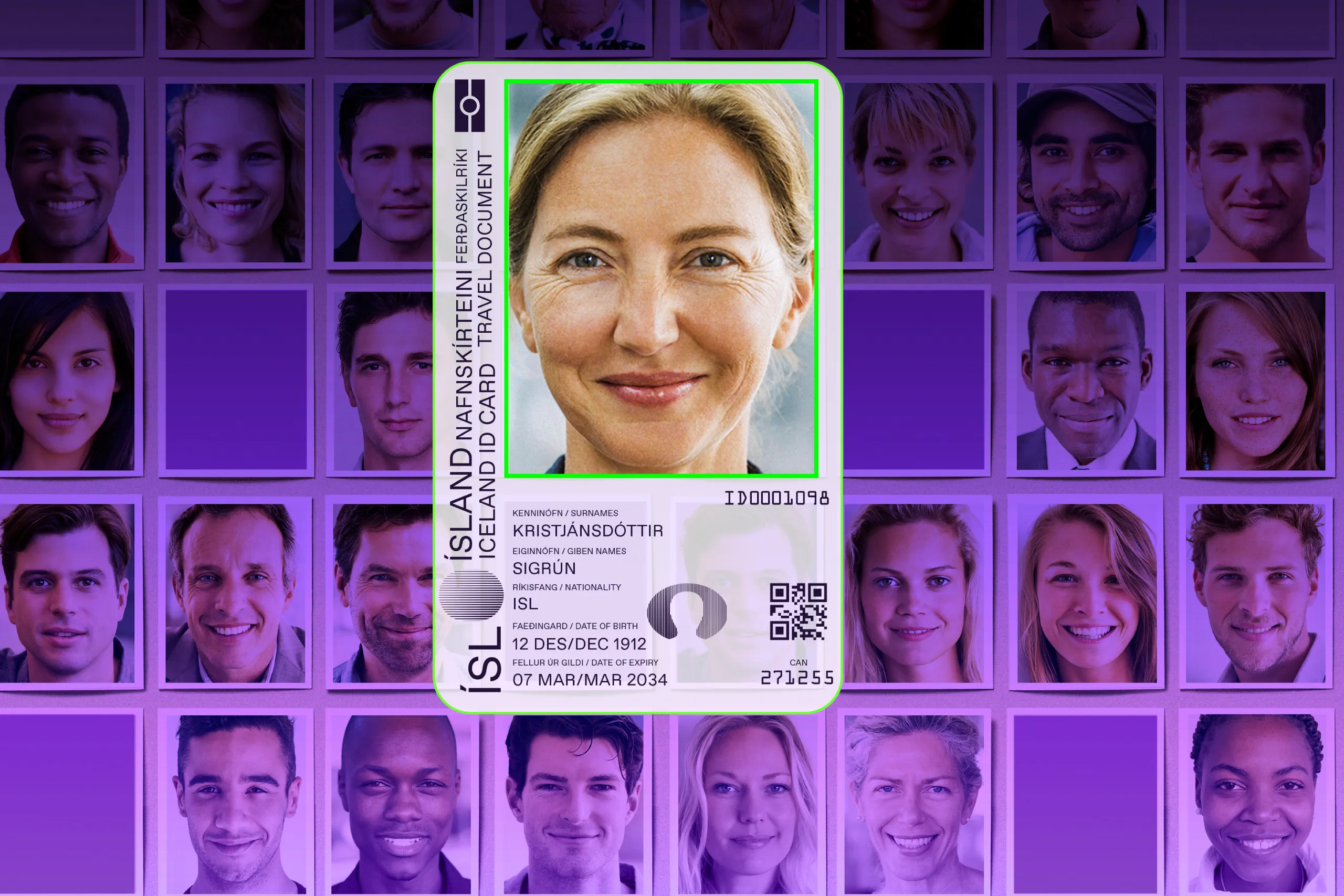In January 2024, Regula commissioned Forrester Consulting to survey decision-makers responsible for their organization’s ID verification solutions. Particularly, we focused on organizations from Aviation, Finance, Government, Technology, and Telecommunications industries from Europe, North America, and the Middle East, with at least 500 employees.
We set out to learn more about the following questions:
Will digital IDs replace physical documents?
How will digital ID adoption impact businesses globally?
What will happen to fraud in the digital ID era?
Here’s what we found out.
Key findings
42% of companies are actively integrating digital IDs into their systems
Physical documents will remain indispensable in the near future
Online financial transactions will be most impacted by digital IDs
77% of respondents believe the adoption of digital identity will improve security and fraud prevention
Here are the details.
Why did we choose the topic of digital identity for our study?
In countries like Estonia, Denmark, the Netherlands, and the UAE, digital IDs are already significantly simplifying processes. They streamline and accelerate identity verification, enhancing both user experience and security. With digital IDs, people can complete critical tasks from the comfort of their homes even without the need to look for an ID card in a wallet, not to mention visiting locations in person.
The seamless convenience that digital IDs bring is akin to the ease of using Apple Pay compared to manually entering card details. By improving user experience and security, digital IDs can encourage increased spending and drive economic growth.
Realizing these potential benefits, we wanted to explore how organizations are adopting digital IDs, their impact on businesses globally, and—something that’s especially important for Regula as an identity verification leader—the future of identity verification.
Half of businesses have plans to upgrade their identity verification programs
One of the findings from this study was that there’s no organization that won’t face the need to implement identity verification in their workflows. 22% expect to implement an identity verification solution within a year, while the rest of the respondents either have it in place already (29%) or plan to upgrade and expand their existing solution (49%).

This finding is in line with this Regula analysis of identity fraud, which found that 91% of organizations are planning to increase their investment in identity verification.
Takeaway: If your company has not yet launched an identity verification program, now seems like a good time to do so. Otherwise, if you’re among the latecomers, you may face increased risks of fraud.
Two-thirds of respondents already have initiatives in progress to accept digital IDs
We wanted to know how familiar organizations are with the concept of digital ID. We also wanted to find out whether this knowledge eventually translates into hands-on experience.
The good news is that 81% of respondents have at least a basic awareness of this technology, with almost half possessing a thorough understanding.
The data also shows that organizations demonstrate a proactive approach to their digital ID strategies: 42% of organizations are actively integrating digital ID technologies into their systems, 31% are in the early stages of implementation, and another 17% of respondents are now developing a strategic plan to begin this transformation.

Among the industries, Telecom is leading adoption: 56% of organizations are currently in the active integration phase, followed by Aviation with 50%.
Takeaway: It's no surprise that companies in sectors with high levels of customer interaction set the tone. Moving beyond basic awareness and starting to act towards embracing digital IDs can soon become a must to stay competitive.
Physical document verification isn’t going anywhere
Many internal Regula experts agree that it’s unlikely that digital IDs will replace physical documents, at least in the near future. The study by Forrester confirms this guess:
We found that despite all the respondents being from large companies, often regulated ones, working with customers at scale—almost half of them (46%) still verify documents manually, even in remote scenarios. This may include conducting video interviews as well as submitting document scans that are further processed by employees. What's more, 35% see physical documents as remaining irreplaceable in their processes.
On the one hand, some manual work isn’t a bad thing. For example, the Aviation industry demonstrates the highest level of manual document verification (63%), which only highlights the stringent security demands in this field.
On the other hand, manual methods coexist with modern techniques, such as biometric verification (54%) and automated document checks (53%).


Interestingly, this data aligns with our previous research on methods and technologies for identity verification in the context of the digital nomad movement. According to that study, 53% of businesses rely on biometric verification.
Takeaway: Since physical document verification remains a critical component of identity verification, it's clear that a hybrid model is here to stay. Therefore, enhancing physical verification processes also requires some attention along with integrating newer technologies like digital ID processing.
Cybersecurity threats are the #1 reason to slow down the adoption of digital IDs
The path to widespread digital ID adoption faces several hurdles. Not all of them depend on the willingness of organizations to adopt the new technology. The survey shows that most respondents believe the lion’s share of challenges lie beyond their direct control.

For instance, one of the obstacles on the road to broad adoption of the digital ID concept is the lack of a general legislative framework for this form of identity proofing. 74% of respondents underscore the necessity for global digital ID standards and legislation to ensure the interoperability of such IDs across borders.
About 71% of respondents recognize the difficulties posed by varied regional perspectives on identity and privacy, which can complicate global acceptance.
As for the more practical implementation concerns, the most significant one—noted by 50% of respondents—is the increased risk of data breaches and cybersecurity threats, which underscores the critical need for robust security measures in digital ID systems.
44% of the respondents voiced fears about privacy, and are worried that digital IDs could deepen surveillance and data tracking.

Takeaway: Digital ID adoption is key for the development of an effective global digital economy. To advance along with it, organizations need to make their voices heard. This includes not only updating their internal IT infrastructure but also advocating for unified global standards and legislation, and even collaborating with international bodies to address regional perspectives.
Enhancing security and reducing fraud risk is the major reason for businesses to advocate digital IDs
While it may seem that pushing initiatives like global digital ID adoption is beyond the scope of business interests, we discovered that organizations do have some hefty reasons to support and welcome it.
Enhanced security and fraud prevention are considered the biggest positive outcomes of implementing digital IDs. This may also bring significant financial benefits. According to our previous report, half of all enterprises reported financial losses of over $300,000 due to identity fraud. With the successful launch of digital IDs, these assets can be better spent on other purposes.
With improved CX—the runner-up answer in the list—the financial gains can be even more thanks to increased conversion rates.

When asked to weigh the pros and cons, 37% of respondents are sure the pros significantly outweigh the cons, while only 8% believe the opposite.

Takeaway: Given the significant financial losses due to identity fraud, investing in digital ID technology can lead to substantial cost savings and improved customer trust.
Digital IDs to revolutionize online finance operations
Implementing digital IDs offers the most immediate and tangible results in several key areas.
Online financial transactions will likely see the highest impact, as digital IDs enhance security and streamline processes.
For example, digital IDs simplify verification for opening online accounts, speeding up customer acquisition and improving user experience.
Ecommerce transactions can benefit from the added layer of security along with better UX, making a verified purchase a breeze.

Takeaway: If you have a remote identity verification process as a part of your user journey, you can reap the benefits of digital IDs by integrating digital ID processing into your app.
Digital IDs transform capabilities for customer engagement
As digital IDs become more embedded, they will change how businesses interact with customers. Our survey reveals that 83% of experts view digital IDs as crucial for enhancing customer privacy, while 81% see them as vital for fortifying security and building trust in every transaction. That’s a bit of a paradox considering cybersecurity concerns are mentioned as a major hurdle for digital ID adoption.
75% of respondents believe digital IDs streamline customer journeys, transforming complex processes into seamless experiences. 74% of leaders expect not only to retain customers but also to inspire loyalty through innovative, personalized services.

Takeaway: The adoption of digital IDs will not only strengthen customer trust but can also help your marketing teams foster loyalty through more meaningful engagement and tailored services.
Conclusion
That was pretty much it. Now, the mike is over to you: what do you think about the future of digital ID? Do you see any other obstacles to (or opportunities for) implementing the concept?
Either way, feel free to get the full version of the study for more facts and the methodologies used in the survey.



.webp)

